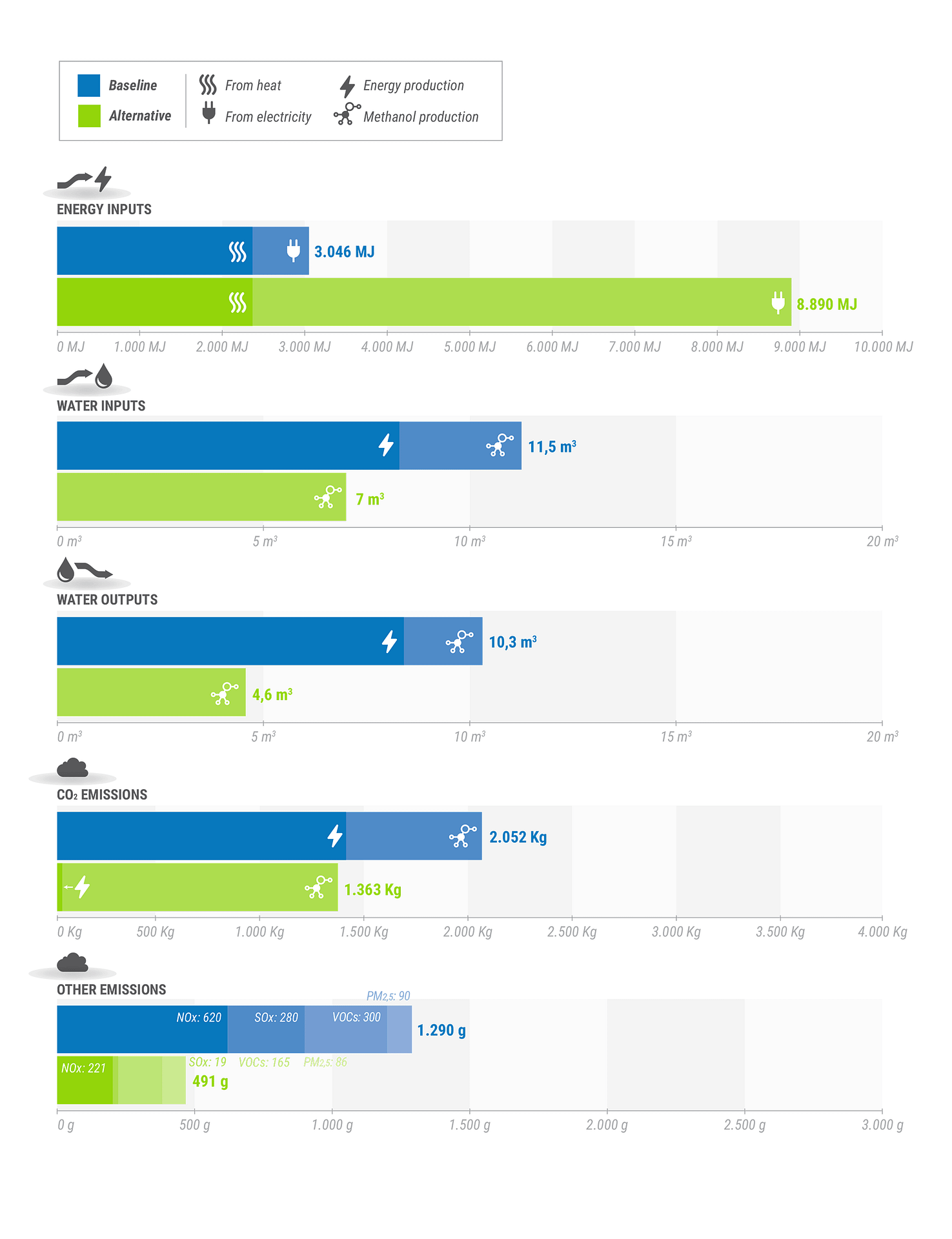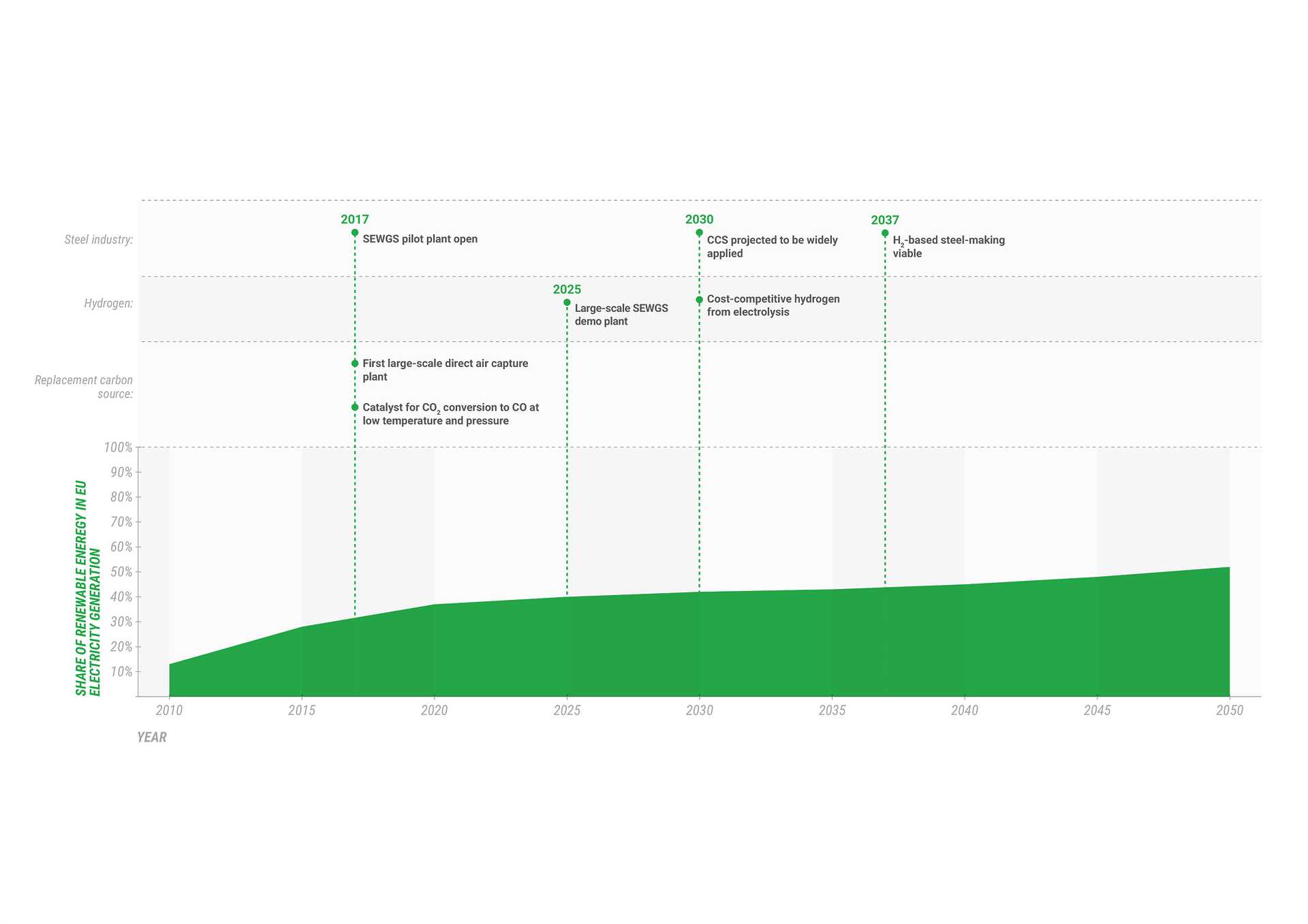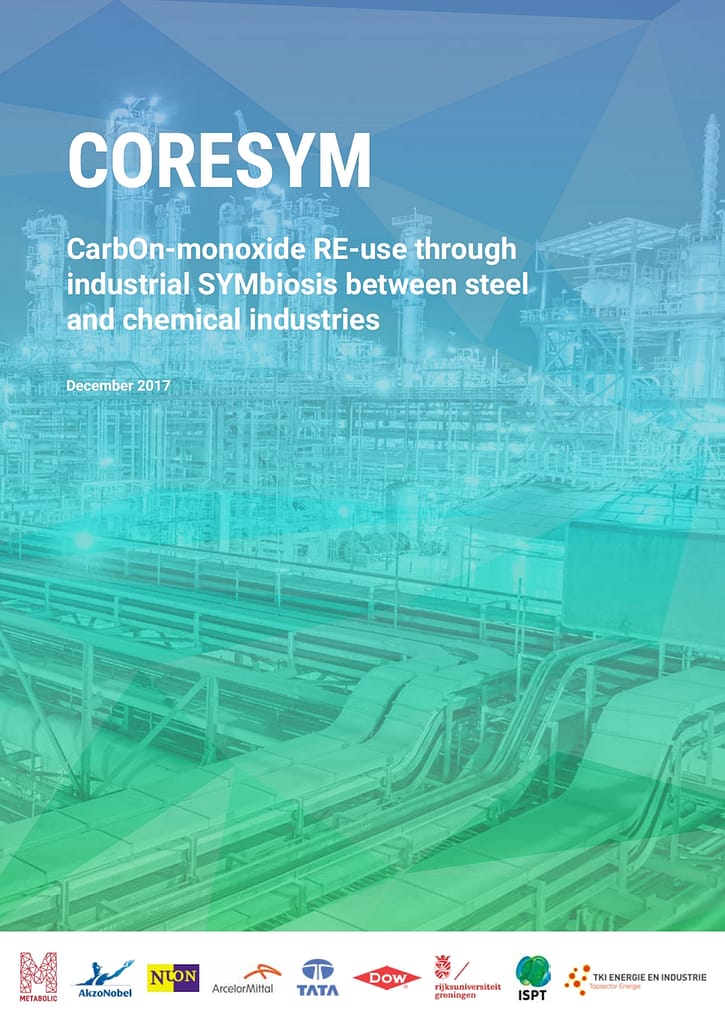Industrial symbiosis between the steel and chemicals industries
Opportunities for industrial symbiosis between the steel and chemicals industries
To understand the potential opportunities and impacts of waste gas recycling, Metabolic and partners completed the ‘CORESYM’ study, which stands for ‘CarbOn-monoxide RE-use through industrial SYMbiosis’ between chemical and steel industries.
- Client: Tata Steel, ArcelorMittal, DOW Chemicals, AkzoNobel, Nuon
- Partners: ISPT, Rijksuniversiteit Groningen
- Date: December 2017
While the chemicals industry has traditionally relied upon fossil fuels as a production feedstock, these reserves are being depleted, they are subject to increasingly volatile prices, and there is a strong drive towards lower ecological impacts. On the other hand, large volumes of carbon are released into the atmosphere by industry daily. Carbon monoxide (CO), in particular, is produced in high volumes as a byproduct of the steel industry.
With a consortium of industries and project partners, we evaluated the techno-economic and environmental implications of shifting chemicals feedstock sources from fossil fuels to carbon-monoxide-rich waste gases from the steel industry. In addition, we evaluated the systemic implications for industry and society of this shift on a European level, the barriers to implementation, and the trends taking place which will affect the feasibility in the future.
The CORESYM study makes pivotal steps in assessing the sustainability implications of CO recycling for Europe, specifically with regards to reducing carbon emissions and meeting European chemical demands sustainably. The study provided a clear set of recommendations for policy makers and industry stakeholders, and two of the consortium members have since begun putting these recommendations into practice by investing in a pilot plant that uses carbon monoxide to produce naptha – a raw material use to produce many chemicals products.










‘’For the Netherlands, re-use of steel gas could mean a decrease in CO2 emissions of five million tons per year. This is one-tenth of the Dutch target for emission reduction in the industry.’’
Andreas ten Cate, ISPT.
Director of Product – Metabolic Software
ANY QUESTIONS?
For more information about this project, please get in touch.






